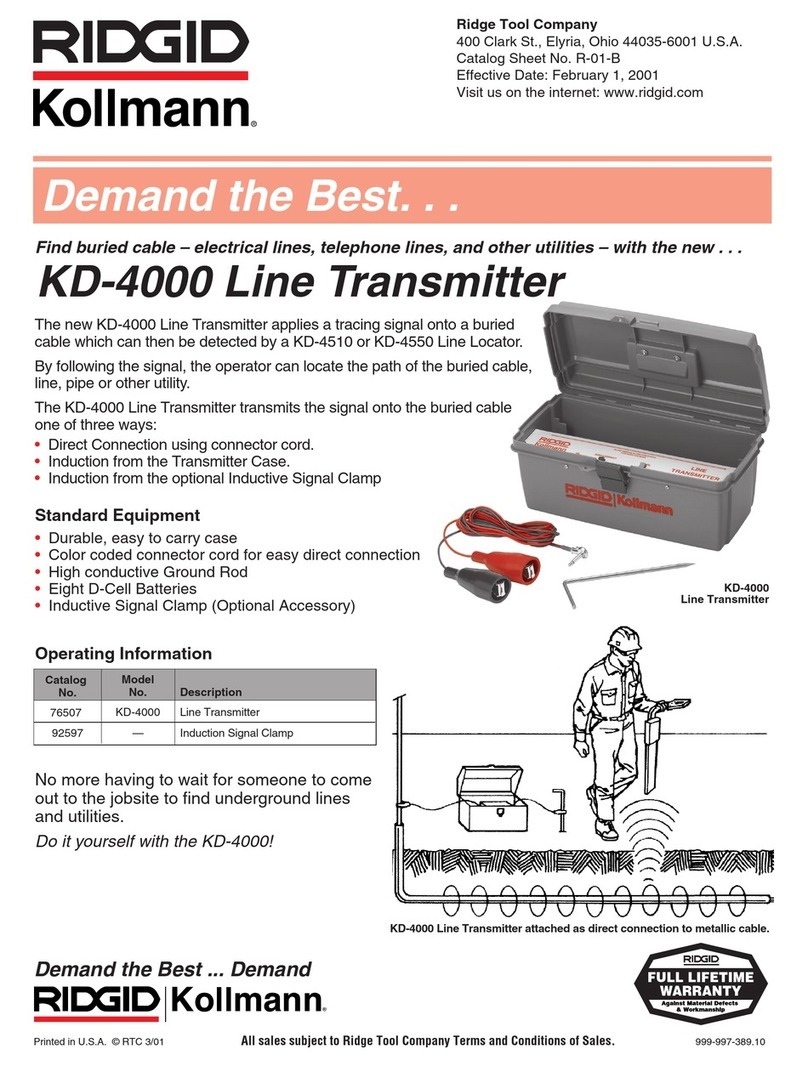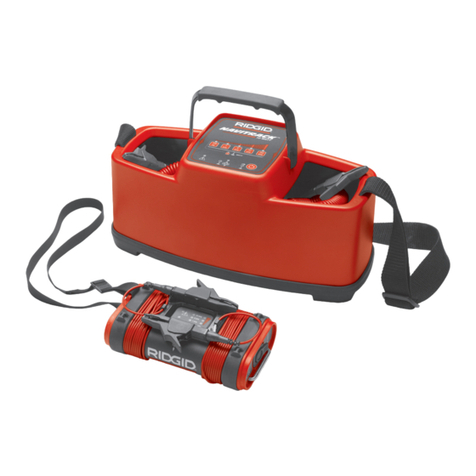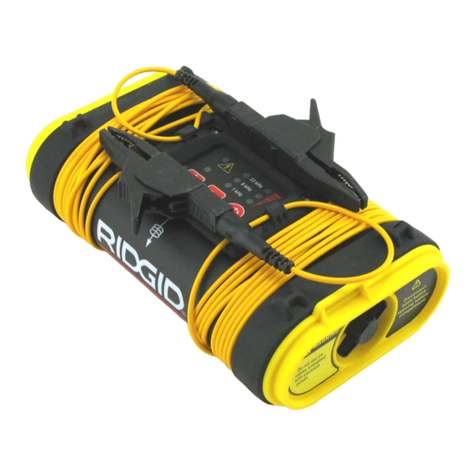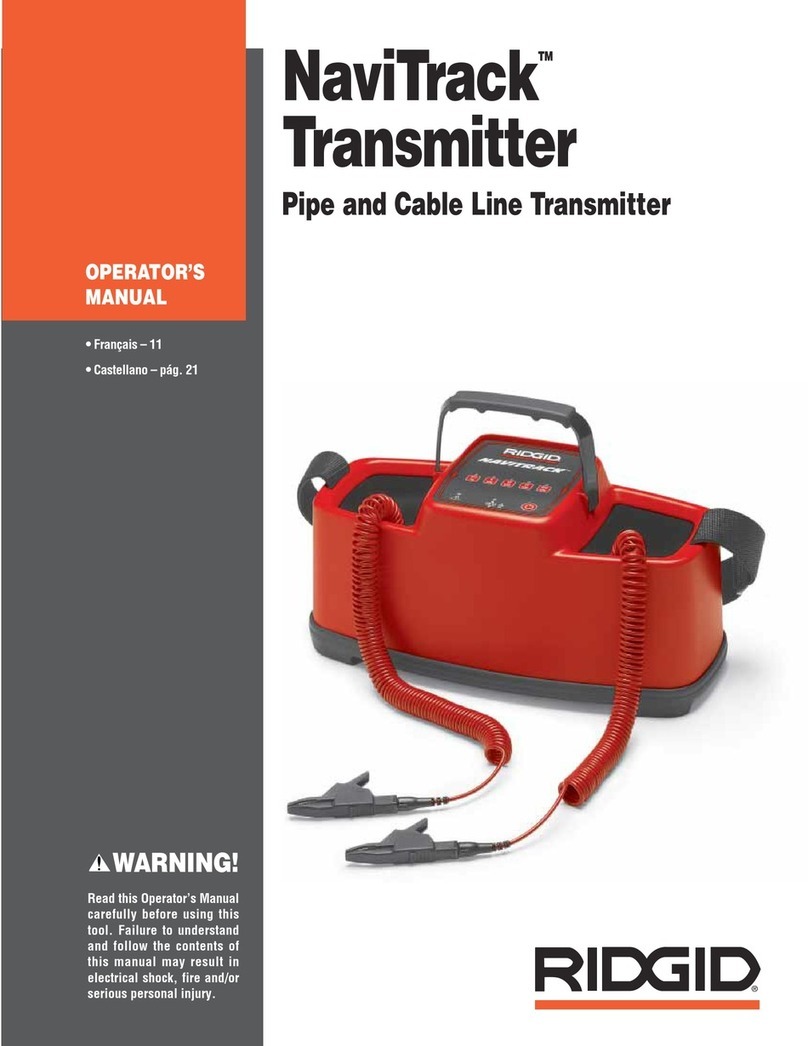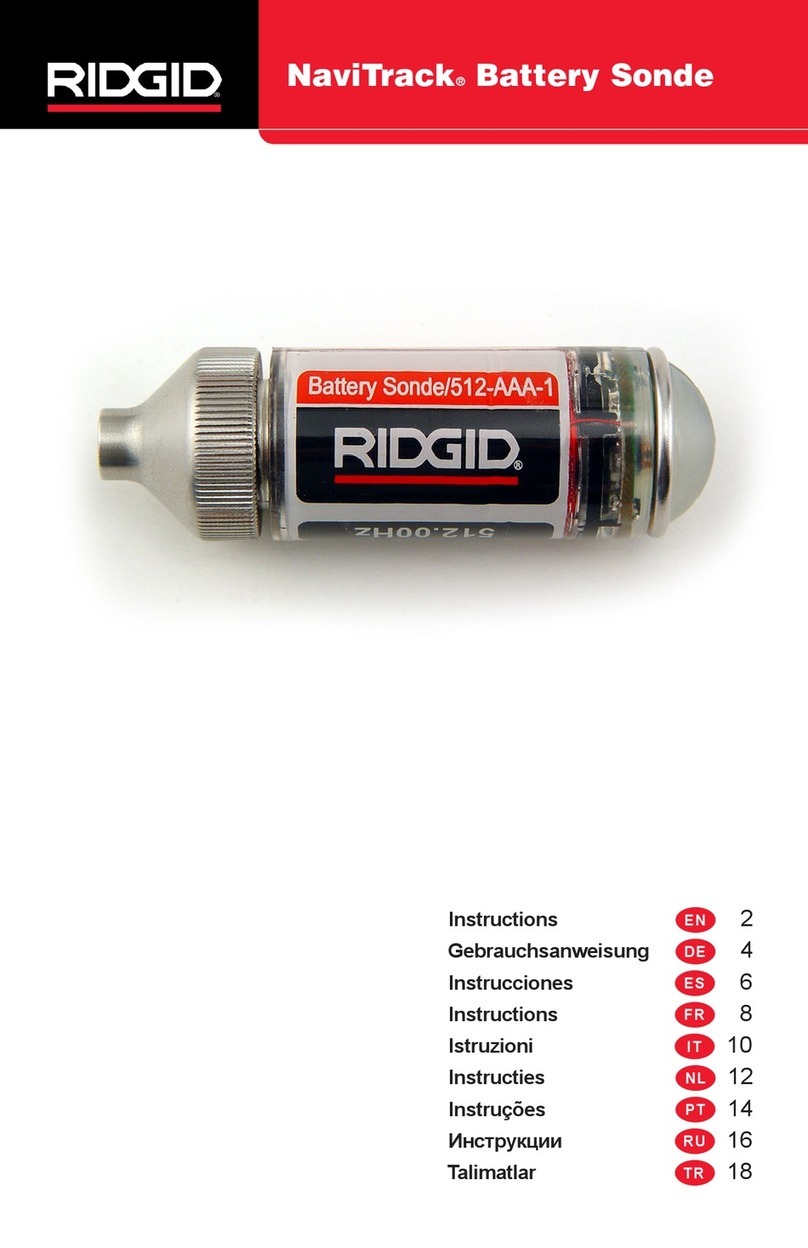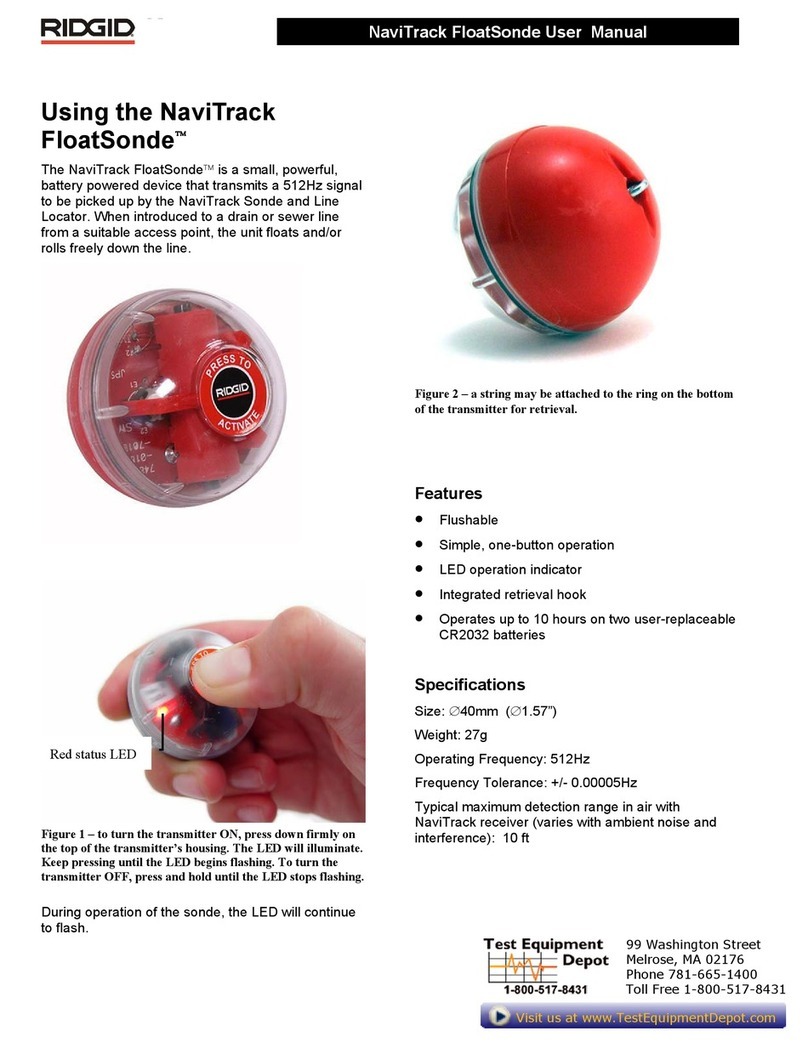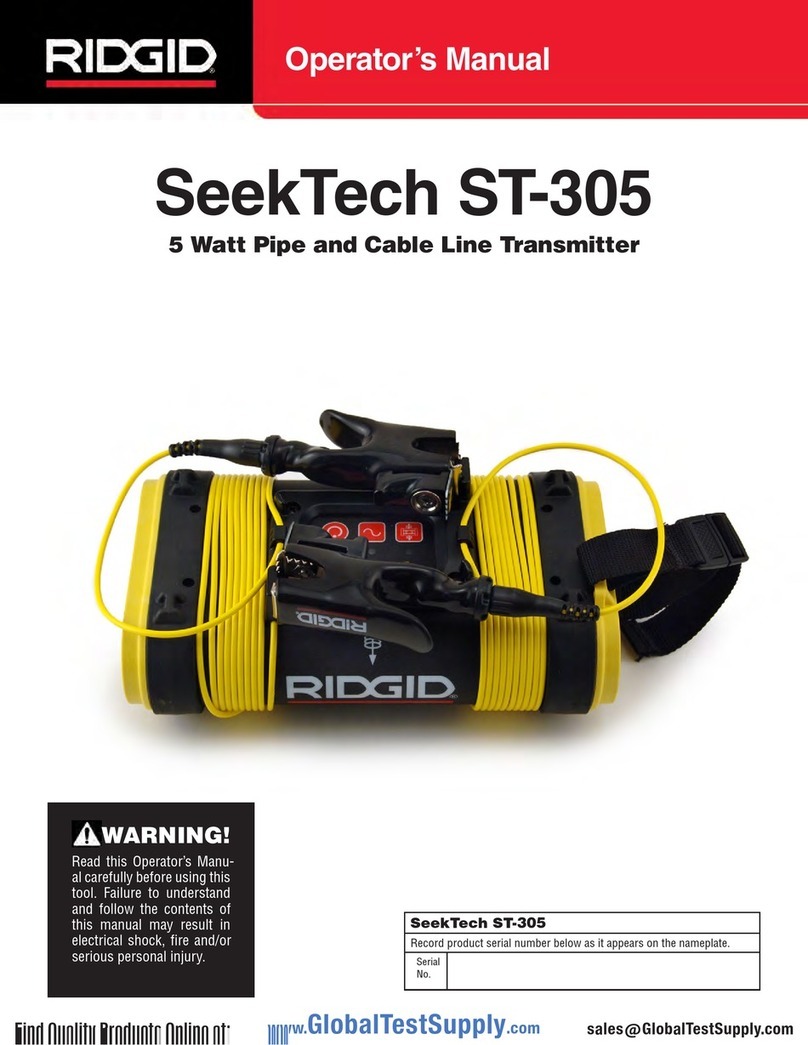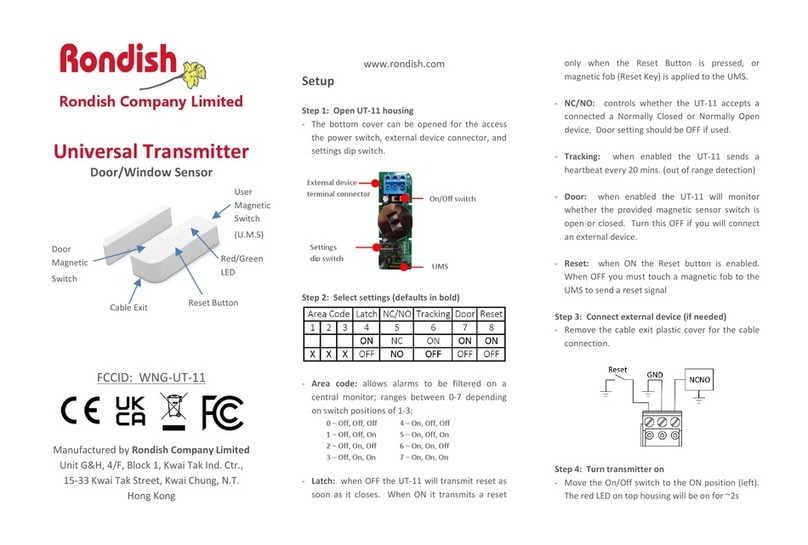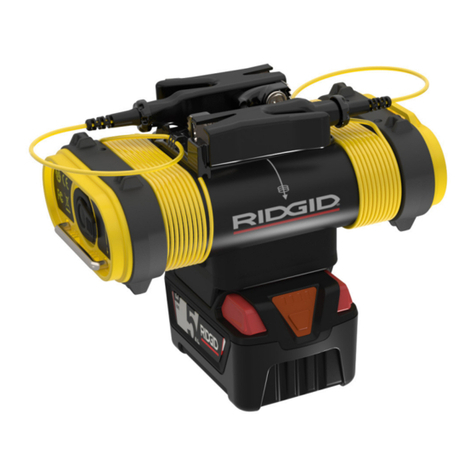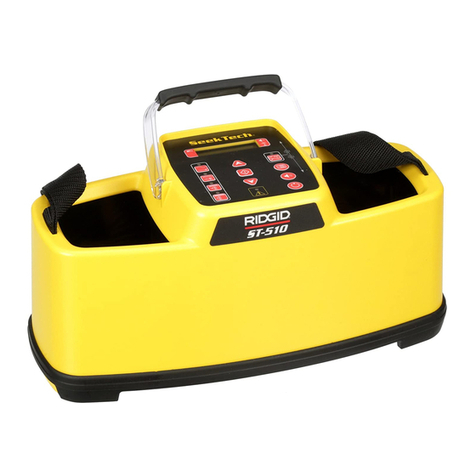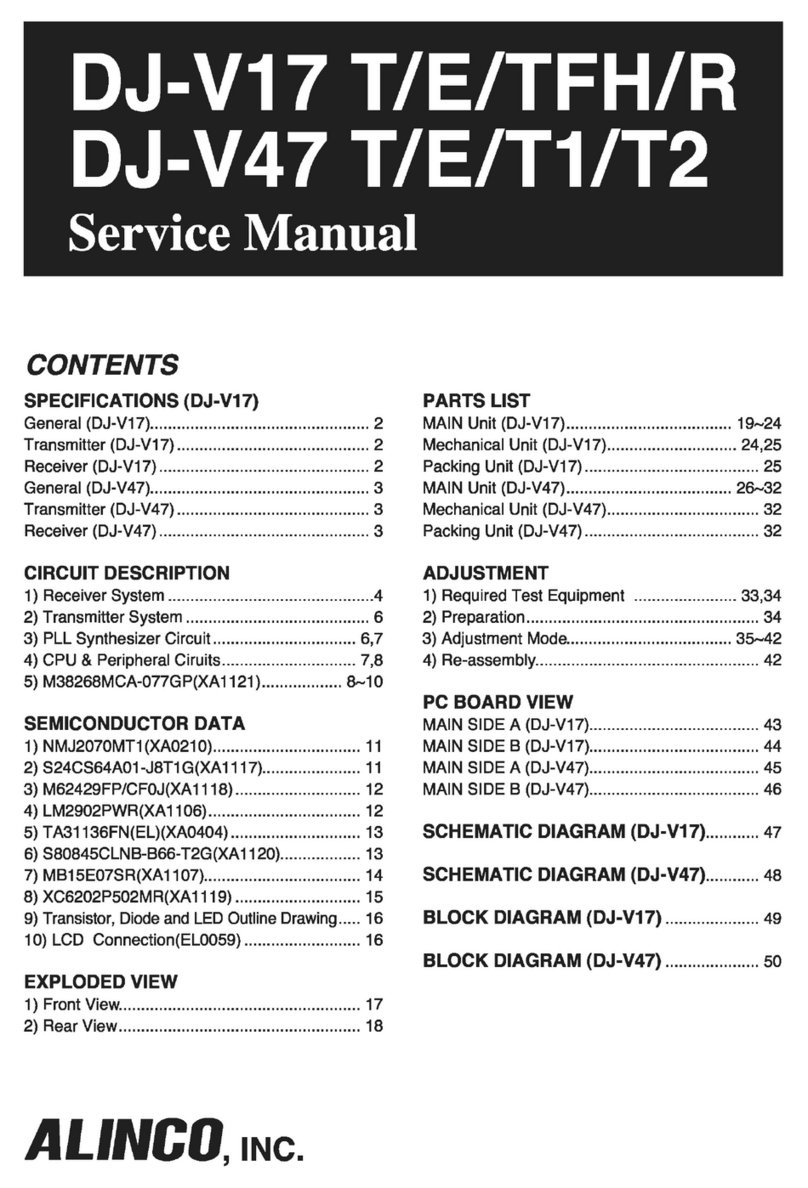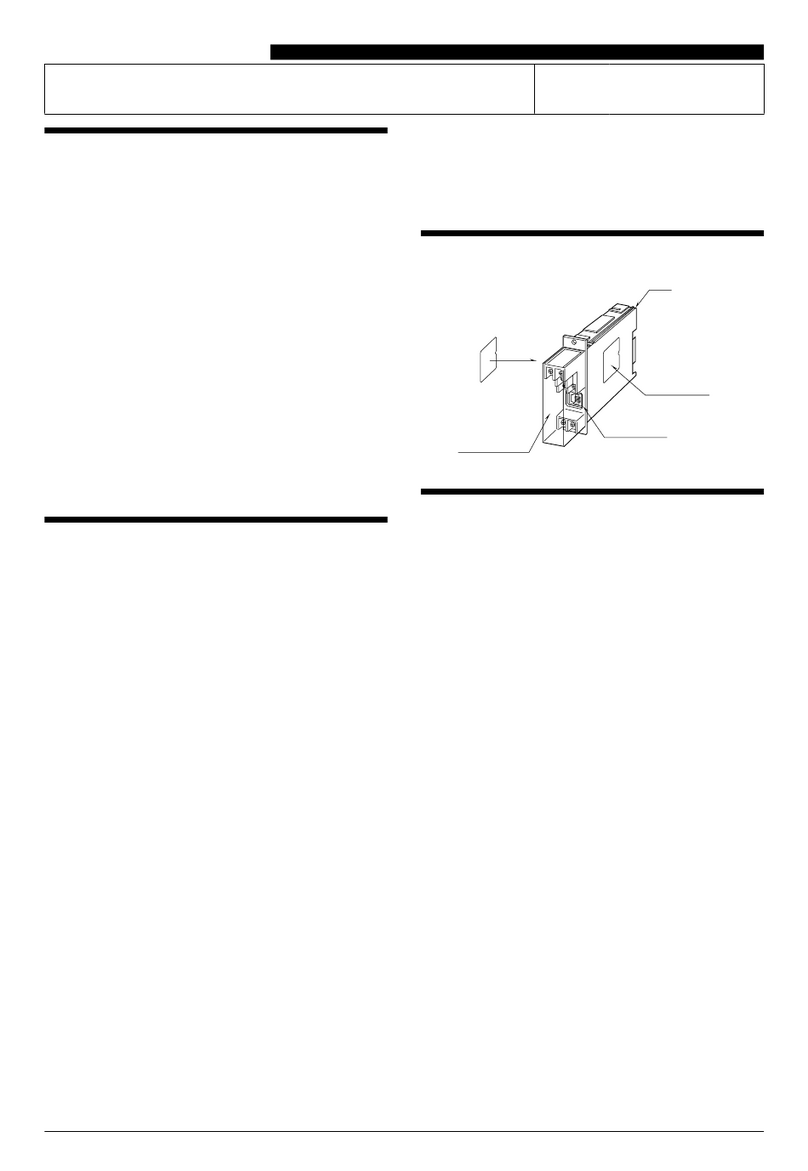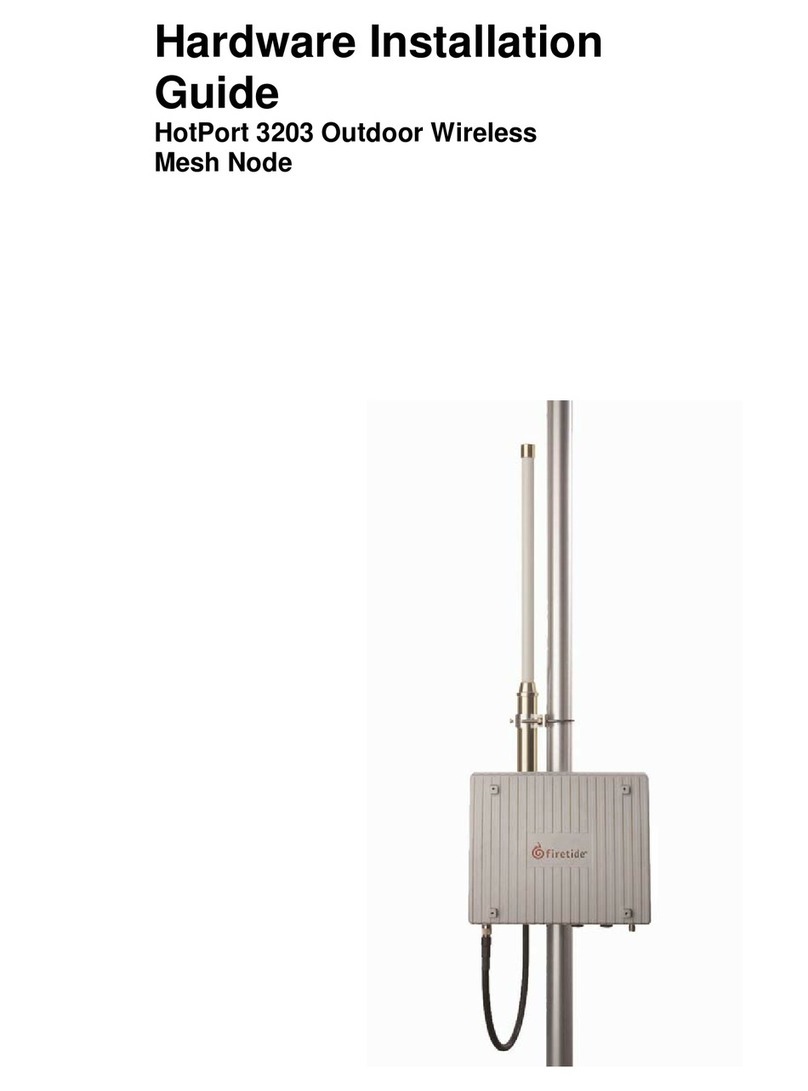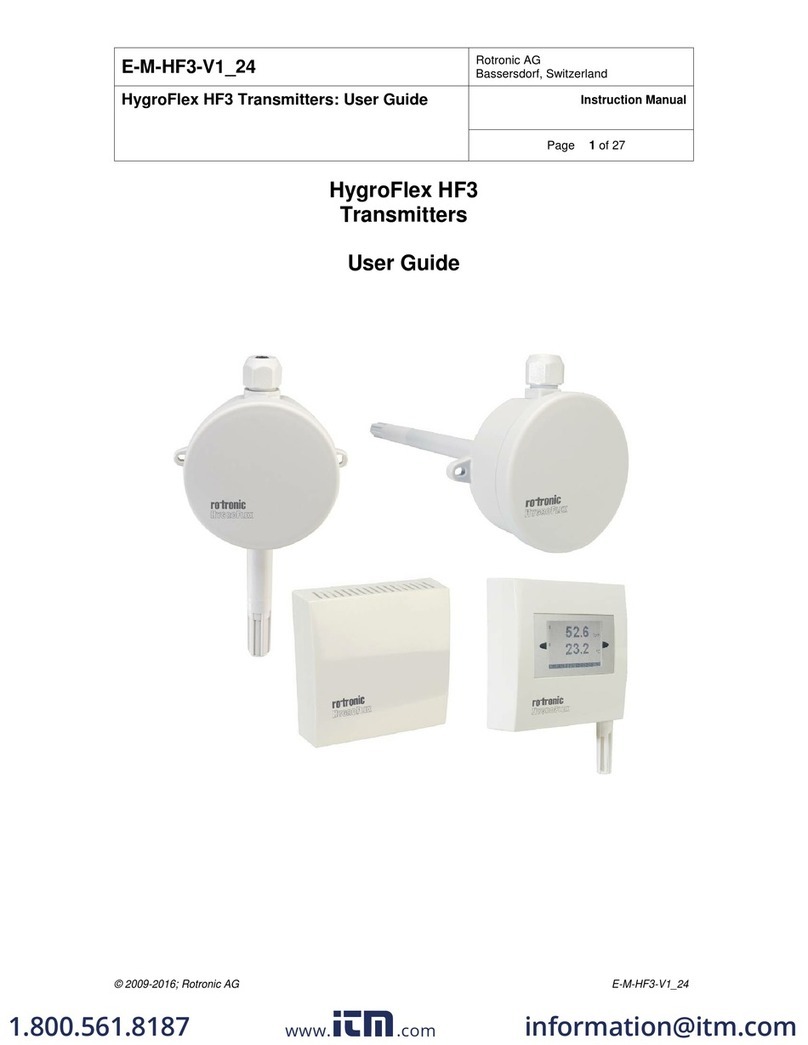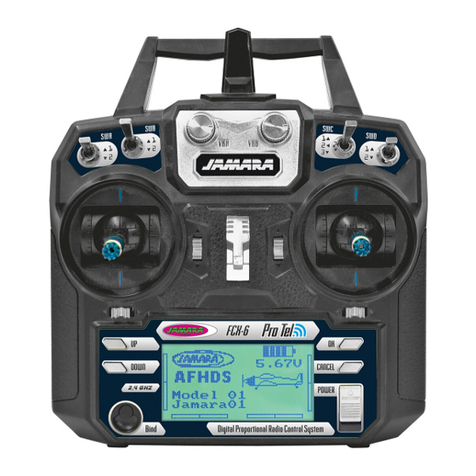Ridge Tool Company 3
SeekTech®ST-510 Line Transmitter
Equipment Use and Care
•Do not force equipment. Use the correct equipment
for your application. The correct equipment will do the
job better and safer at the rate for which it is designed.
•Do not use equipment if the switch does not turn it
ON and OFF. Any equipment that cannot be con-
trolled with the switch is dangerous and must be re-
paired.
•Disconnect the plug from the power source and/or
the battery pack from the equipment before making
any adjustments, changing accessories or stor-
ing. Such preventive safety measures reduce the risk
of injury.
•Store idle equipment out of the reach of children
and do not allow persons unfamiliar with the equip-
ment or these instructions to operate the equip-
ment. Equipment is dangerous in the hands of untrained
users.
•Maintain equipment. Check for misalignment or bind-
ing of moving parts, missing parts, breakage of parts
and any other condition that may affect the equip-
ment’s operation. If damaged, have the equipment
repaired before use. Many accidents are caused by
poorly maintained equipment.
•Use the equipment and accessories in accordance
with these instructions, taking into account the
working conditions and the work to be performed.
Use of the equipment for operations different from
those intended could result in a hazardous situation.
•Use only accessories that are recommended by
the manufacturer for your model. Accessories that
may be suitable for one piece of equipment may be-
come hazardous when used with other equipment.
•Keep handles dry and clean; free from oil and
grease. Allows for better control of the equipment.
Battery Use and Care
•Recharge only with the charger specified by the
battery manufacturer. A charger that is suitable for
one type of battery may create a risk of fire when
used with another battery.
•Under abusive conditions, liquid may be ejected
from the battery; avoid contact. If contact acciden-
tally occurs, flush with water. If liquid contacts eyes, ad-
ditionally seek medical help. Liquid ejected from the
battery may cause irritation or burns.
•Properly dispose of batteries. Exposure to high
temperatures can cause the batteries to explode, so do
not dispose of in a fire. Some countries have regula-
tions concerning battery disposal. Please follow all
applicable regulations.
Service
•Have your equipment serviced by a qualified repair
person using only identical replacement parts.
This will ensure that the safety of the power tool is
maintained.
Specific Safety Information
WARNING
This section contains important safety information
that is specific to this equipment.
Read these precautions carefully before using the
SeekTech®ST-510 Line Transmitter to reduce the
risk of electrical shock, fire or serious personal in-
jury.
SAVE THESE INSTRUCTIONS!
Keep this manual with the machine for use by the operator.
If you have any question concerning this Ridge Tool
product:
– Contact your local RIDGID distributor.
– Visit www.RIDGID.com or www.RIDGID.eu to find
your local Ridge Tool contact point.
– Contact Ridge Tool Technical Services Department at
Canada call (800) 519-3456.
ST-510 Line Transmitter Safety
•Do not operate this equipment if operator or ma-
chine is standing in water. Operating machine while
in water increases the risk of electrical shock.
•The ST-510 Line Transmitter is not water resis-
tant. Do not expose the equipment to water or
rain. This increases the risk of electrical shock.
•Do not use where a danger of high voltage contact
is present. Do not attach leads to high voltage
line. The equipment is not designed to provide high
voltage protection and isolation. Use high voltage pre-
cautions to carefully disconnect leads.
•Always attach leads before turning unit on and
turn unit off before disconnecting leads to reduce
the risk of electrical shock.
•Locating equipment uses electromagnetic fields
that can be distorted and interfered with. More
than one utility may be present in a given area.
Follow local guidelines and one call/call before
you dig service procedures. Exposing the utility is
